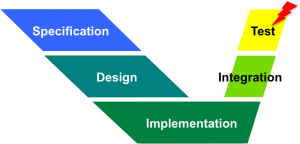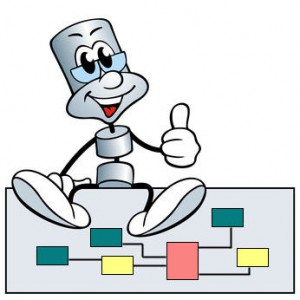What is today’s challenge in product development? – Among many other requirements, stakeholders ask for …
- … shorter product development and service times,
- … products with an ever increasing degree of complexity and environmental interaction
- … and higher demands regarding reliability, availability, safety and security – or: dependability.

However, analyzing faults within the “usual” safety process often causes a lot of effort. In many organizations and companies it is classically based on many documents that have to be authored, understood, reviewed, processed – with high potential for misinterpretation, late error detection and budget overruns.
Quite often this leads to a very imbalanced V-chart of product development, leaving too little time for proper testing or – even worse – when final testing fails and significant rework is required.
This challenge can only be answered with new, integrated solutions for the engineering, production and service process.
What in more than 2 decades for us has proven to be useful is proper system analysis supported by “buildingblock”-like, object-oriented modeling. Combined with innovative simulation procedures this allows easy interactive behavior evaluations, even of underdetermined or overdetermined systems.
 Capturing the functional dependency or even the physical behavioral knowledge of items and their faults in model-blocks allows automatic evaluation of their consequences. The RAMS-analyses may then come as a “by-product” during system development, almost without extra effort.
Capturing the functional dependency or even the physical behavioral knowledge of items and their faults in model-blocks allows automatic evaluation of their consequences. The RAMS-analyses may then come as a “by-product” during system development, almost without extra effort.
“Constraints” play a key role here to represent as much knowledge as possible in a reusable library. This not only conserves the knowledge of domain experts – who might not be available soon due to retirement or job-hop – for the future, but also paves the way to executable specifications, strongly supporting the proper formulation of requirements on the correct level.
But the benefit of modelbased approaches doesn’t end once the system is readily developped. Also the processes of introducing the new product into the market, communicating it to potential customers, introducing it to users and training maintenance staff may be captured by models of the communication campaign and afterwards executed in a highly automated way. This allows completely new ways of customer interaction and ideally complements the idea of the “Internet of Things” respectively the “Industry 4.0”.![]()